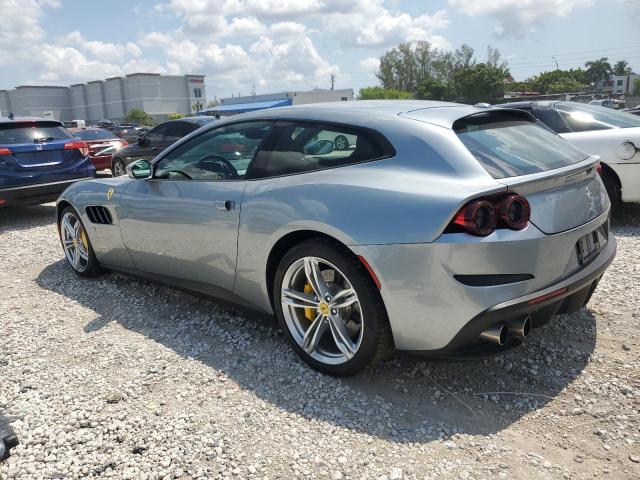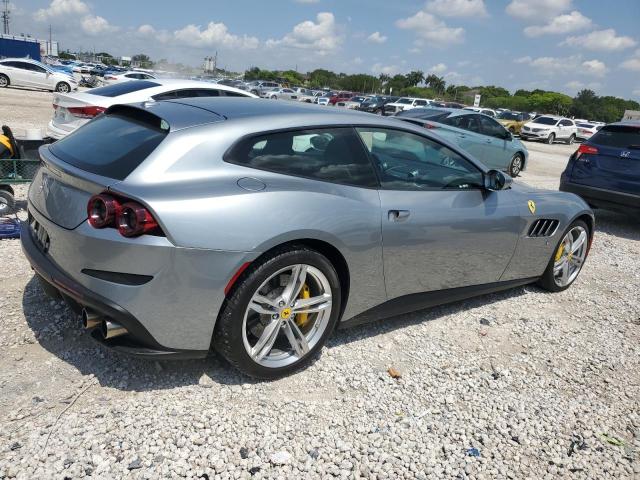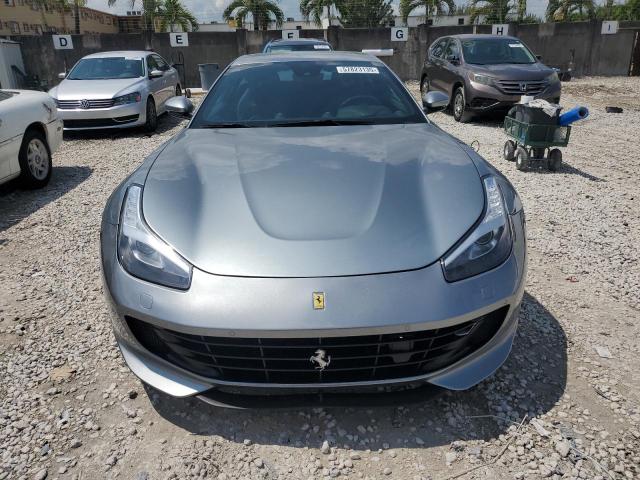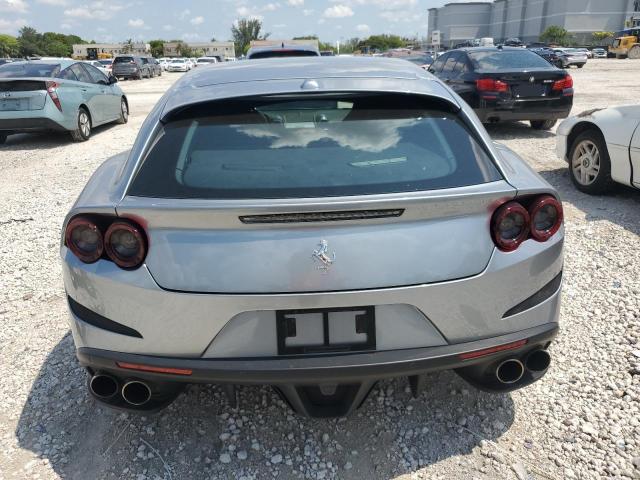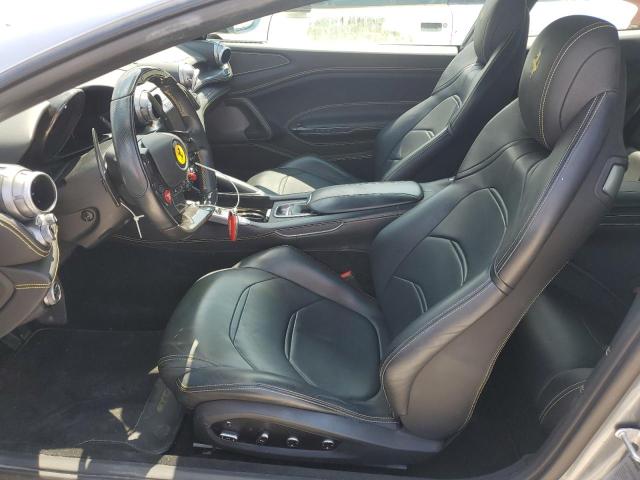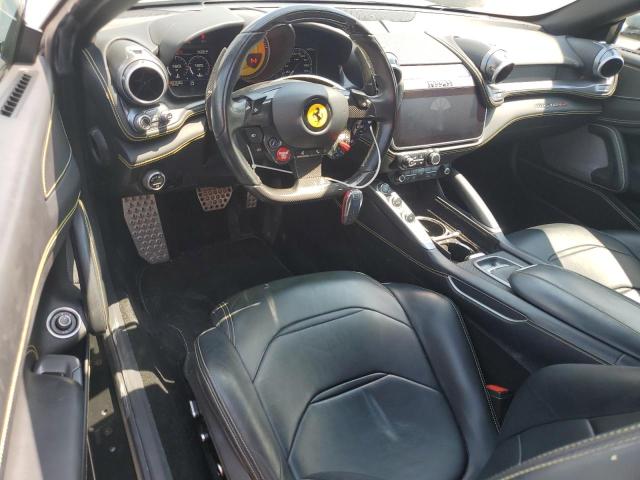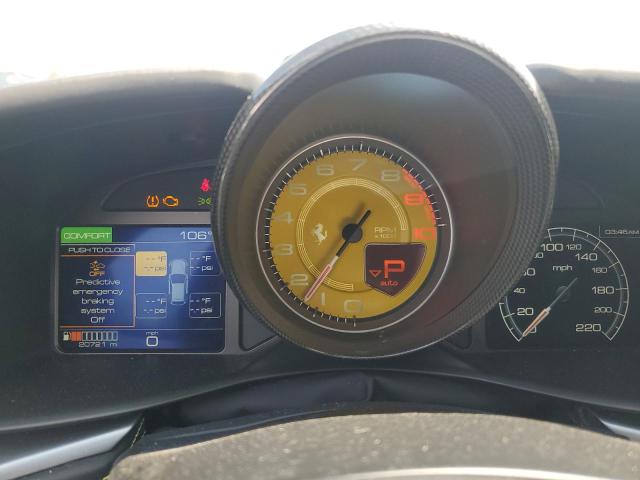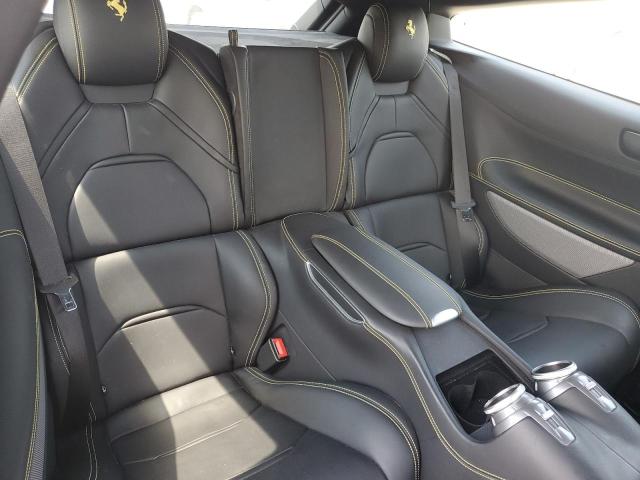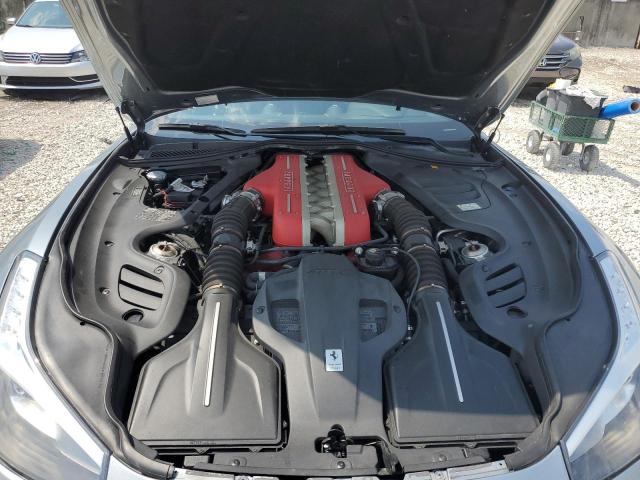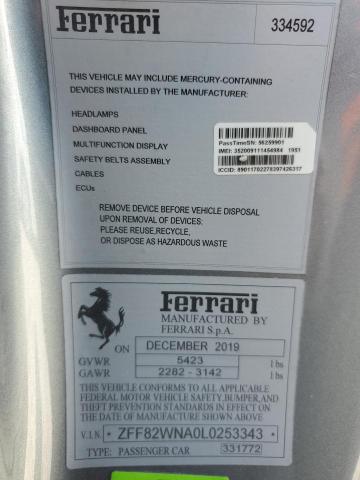2020 FERRARI GTC4LUSSO | ZFF82WNA0L0253343
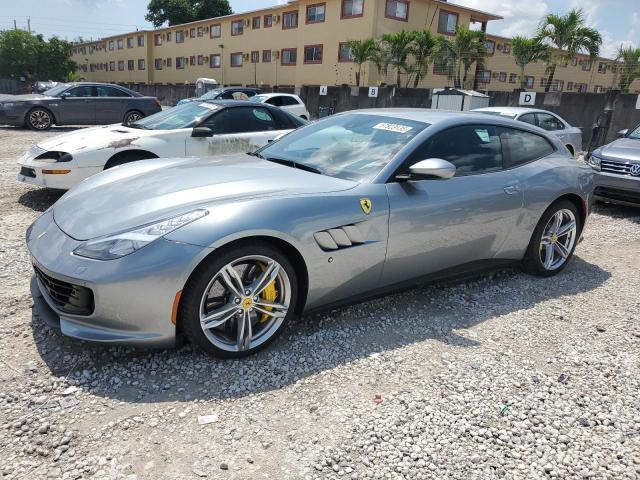 ❯
❯
Specifications
2
~$300,000
Engine: 6.3L naturally aspirated V12
Torque: 697 Nm
0–100 km/h: ~3.4 s
The Ferrari GTC4Lusso V12 was the final evolution of Ferrari’s all-wheel-drive grand tourer formula — a stunning blend of everyday usability and uncompromised V12 performance. Powered by a 6.3L naturally aspirated V12 delivering 690 hp, it launched from 0 to 100 km/h in just 3.4 seconds, while comfortably seating four adults with luggage.
Like its predecessor, the Lusso used Ferrari’s patented 4RM EVO AWD system, which operated exclusively in low-grip conditions to assist the rear-biased layout. Paired with rear-wheel steering, magnetorheological dampers, and Side Slip Control 4.0, the Lusso delivered incredible agility for a 1.9-ton shooting brake.
The cabin was Ferrari’s most refined to date — a dual-cockpit layout, digital passenger display, upgraded infotainment, and climate comfort for four. Yet despite the luxury, the V12 remained the centerpiece: naturally aspirated, throttle-responsive, and gloriously vocal to its 8,250 rpm redline.
Stylistically, the GTC4Lusso improved on the FF with tighter surfaces, sharper detailing, and more aerodynamic efficiency — while retaining the unique, elongated fastback profile. It was a true GT car for any season, any road, and any continent.
The GTC4Lusso V12 earns its place in the performance registry as Ferrari’s ultimate all-weather grand tourer, and the final non-electrified four-seat Ferrari with a naturally aspirated V12 — a mechanical masterpiece dressed as a family car.
Body Styles
A rare 3-door grand tourer in shooting brake form, blending exotic supercar styling with four-seater practicality and hatchback functionality. The Lusso featured Ferrari’s signature long clamshell hood, swept tail, and aggressive stance. The V12 version retained AWD (4RM Evo) and four-wheel steering, while the V8 Lusso T used a lighter, RWD-only layout better suited for urban and warmer climates.
Model Name Meaning (Manufacturer)
“GTC” stands for Gran Turismo Coupé, “4” refers to the number of seats, and “Lusso” means luxury in Italian – a nod to the elegant Ferrari 330 GTC and 250 GT Lusso of the past. The GTC4Lusso replaced the Ferrari FF, refining its formula with more power, sharper handling, and a redesigned cabin. The addition of the Lusso T marked the first time Ferrari offered a V8 in a four-seat GT, aimed at owners prioritizing city driving over all-weather versatility.
Model Name Meaning (Languages)
“Lusso” universally signifies luxury and elegance, and the name worked seamlessly across global markets. In China, the Middle East, and Europe, the nameplate was synonymous with comfort-oriented Ferrari ownership. The V12 AWD model was favored in snowbelt and mountain regions, while the V8 Lusso T sold strongly in urban and warmer environments like the U.S. West Coast, UAE, and Southeast Asia.
Body & Interior Colors and Rims
Ferrari offered the GTC4Lusso in a palette of bold, refined, and heritage shades. Iconic tones included Rosso Corsa, Grigio Silverstone, Blu Tour de France, and Giallo Modena, while Lusso-exclusive finishes like Blu America, Grigio Ingrid, Avorio, and Rosso Fiorano emphasized GT sophistication. Triple-layer options like Bianco Italia and Rosso Fuoco were popular among Tailor Made clients, along with dual-tone roof finishes in Nero or Argento Opaco.
The interior featured a luxurious cabin layout with hand-stitched leather, dual 10.25-inch displays, and an industry-first passenger touchscreen. Seat trim options included Cuoio, Beige Tradizione, Tortora, Blu Sterling, and Nero, with optional Alcantara, carbon fiber inserts, and even Panoramic Glass Roof. The Lusso cabin introduced Ferrari’s most advanced infotainment system of the era, with Apple CarPlay, split-screen navigation, and climate zones for all passengers.
Standard wheels were 20-inch diamond-finished alloys, with optional forged wheels available in black, grey, satin, and polished finishes. The V12 version often received more elegant wheel styles, while the Lusso T offered sportier, open-spoke forged designs. Carbon-ceramic brakes came standard, and calipers were available in red, yellow, silver, black, or custom Atelier colors. The rear diffuser, side skirts, and grille could be optioned in carbon fiber.
Top Expensive Options
- Panoramic Electrochromic Glass Roof: ~$16,000
- Dual-Screen Passenger Display: ~$5,000
- Carbon Fiber Interior Upgrade Pack: ~$9,000
- JBL Professional 1,280W Hi-Fi System: ~$6,700
- Carbon Exterior Pack (Diffuser, Skirts, Mirror Caps): ~$14,000
- Daytona or Style Racing Seats (Heated/Ventilated): ~$7,500
- Forged Painted Wheels with Titanium Bolts: ~$6,000
- Apple CarPlay + Smartphone Integration: ~$4,200
- Adaptive Front Lighting with Cornering Beam: ~$3,800
- Tailor Made Dual-Tone Paint or Heritage Color: ~$12,000–$25,000
vs Competitors
The Ferrari GTC4Lusso was one of the most unique offerings in Ferrari’s modern history — a luxury four-seat shooting brake with either a naturally aspirated V12 or twin-turbo V8, combining grand touring comfort with true Ferrari performance. Replacing the FF, it stood alone as a high-performance AWD GT with space for four adults and usable cargo room, yet it still delivered a rear-biased, emotionally engaging driving experience. Its rivals included the Porsche Panamera Turbo, Aston Martin Rapide S, Bentley Continental GT, Mercedes-AMG GT 4-Door, and even the Lamborghini Urus — though none truly mirrored the GTC4Lusso’s distinctive format.
Against the Porsche Panamera Turbo / Turbo S E-Hybrid, the GTC4Lusso offered a more exotic powertrain and far more exclusivity. Porsche’s four-door hatchback provided superior tech integration and everyday usability, but the Ferrari’s 12-cylinder symphony and dynamic feel elevated it to another level. While the Panamera was more practical and efficient, the Lusso V12 was purer and more emotional — especially at high revs.
Compared to the Aston Martin Rapide S, the GTC4Lusso delivered more advanced all-wheel-drive technology, more rear-seat space, and significantly better chassis control. The Rapide impressed with its design and character, but it lagged behind in infotainment, dynamics, and cabin flexibility. The Ferrari’s 4RM EVO AWD system allowed it to combine all-weather usability with cornering precision the Aston couldn’t quite match.
Facing off with the Bentley Continental GT, particularly the W12 models, the GTC4Lusso was sharper, lighter, and more driver-focused, whereas the Bentley prioritized luxury, comfort, and refinement. The Bentley’s cabin was more opulent and better suited to relaxed cruising, but the Ferrari felt alive, agile, and far more eager in spirited driving — with a chassis tuned for engagement rather than isolation.
Against the Mercedes-AMG GT 63 S 4-Door, the Lusso stood apart through layout and heritage. The AMG, while brutally fast and tech-heavy, leaned toward sedan functionality. It lacked the Ferrari’s naturally aspirated engine drama, shooting brake form factor, and bespoke feel. The Lusso’s V12 engine and dual-screen interior layout provided a more exotic, special experience, even if the AMG matched it in sheer pace.
Interestingly, even the Lamborghini Urus became a cross-shop option for buyers seeking exotic performance with space — but while the Urus excelled in SUV practicality and boldness, the GTC4Lusso remained the only true GT car in this group, delivering low-slung dynamics and a grand touring soul in a format that remained uniquely Ferrari.
Fun Fact
The GTC4Lusso was the last naturally aspirated V12 GT Ferrari without hybrid assistance – and the last Ferrari to offer four seats, a hatchback, and AWD together. It also introduced the most refined infotainment system Ferrari had ever developed at launch, making it the first Ferrari truly suited to both track days and family road trips. Its 6.3L V12 is also one of the largest displacement engines ever fitted to a Ferrari road car, shared in origin with the LaFerrari (minus hybrid system).
Lot Details
-
Sale Date06/Jun/2025
-
Lot Number57823135
-
Location
-
Odometer20,721 miles (33,347 km)
-
Primary Damage:UNDERCARRIAGE
-
Secondary DamageMINOR DENT/SCRATCHES
-
Fuel
-
Engine Type3.9L 12
-
Transmission
-
Drive Type
-
Color
Final Bid Ferrari GTC4Lusso (2020)
$110,000
$110,000
$110,000
Specifications
2
~$300,000
Torque:
0–100 km/h:
The Ferrari GTC4Lusso V12 was the final evolution of Ferrari’s all-wheel-drive grand tourer formula — a stunning blend of everyday usability and uncompromised V12 performance. Powered by a 6.3L naturally aspirated V12 delivering 690 hp, it launched from 0 to 100 km/h in just 3.4 seconds, while comfortably seating four adults with luggage.
Like its predecessor, the Lusso used Ferrari’s patented 4RM EVO AWD system, which operated exclusively in low-grip conditions to assist the rear-biased layout. Paired with rear-wheel steering, magnetorheological dampers, and Side Slip Control 4.0, the Lusso delivered incredible agility for a 1.9-ton shooting brake.
The cabin was Ferrari’s most refined to date — a dual-cockpit layout, digital passenger display, upgraded infotainment, and climate comfort for four. Yet despite the luxury, the V12 remained the centerpiece: naturally aspirated, throttle-responsive, and gloriously vocal to its 8,250 rpm redline.
Stylistically, the GTC4Lusso improved on the FF with tighter surfaces, sharper detailing, and more aerodynamic efficiency — while retaining the unique, elongated fastback profile. It was a true GT car for any season, any road, and any continent.
The GTC4Lusso V12 earns its place in the performance registry as Ferrari’s ultimate all-weather grand tourer, and the final non-electrified four-seat Ferrari with a naturally aspirated V12 — a mechanical masterpiece dressed as a family car.
Body Styles
A rare 3-door grand tourer in shooting brake form, blending exotic supercar styling with four-seater practicality and hatchback functionality. The Lusso featured Ferrari’s signature long clamshell hood, swept tail, and aggressive stance. The V12 version retained AWD (4RM Evo) and four-wheel steering, while the V8 Lusso T used a lighter, RWD-only layout better suited for urban and warmer climates.
Model Name Meaning (Manufacturer)
“GTC” stands for Gran Turismo Coupé, “4” refers to the number of seats, and “Lusso” means luxury in Italian – a nod to the elegant Ferrari 330 GTC and 250 GT Lusso of the past. The GTC4Lusso replaced the Ferrari FF, refining its formula with more power, sharper handling, and a redesigned cabin. The addition of the Lusso T marked the first time Ferrari offered a V8 in a four-seat GT, aimed at owners prioritizing city driving over all-weather versatility.
Model Name Meaning (Languages)
“Lusso” universally signifies luxury and elegance, and the name worked seamlessly across global markets. In China, the Middle East, and Europe, the nameplate was synonymous with comfort-oriented Ferrari ownership. The V12 AWD model was favored in snowbelt and mountain regions, while the V8 Lusso T sold strongly in urban and warmer environments like the U.S. West Coast, UAE, and Southeast Asia.
Body & Interior Colors and Rims
Ferrari offered the GTC4Lusso in a palette of bold, refined, and heritage shades. Iconic tones included Rosso Corsa, Grigio Silverstone, Blu Tour de France, and Giallo Modena, while Lusso-exclusive finishes like Blu America, Grigio Ingrid, Avorio, and Rosso Fiorano emphasized GT sophistication. Triple-layer options like Bianco Italia and Rosso Fuoco were popular among Tailor Made clients, along with dual-tone roof finishes in Nero or Argento Opaco.
The interior featured a luxurious cabin layout with hand-stitched leather, dual 10.25-inch displays, and an industry-first passenger touchscreen. Seat trim options included Cuoio, Beige Tradizione, Tortora, Blu Sterling, and Nero, with optional Alcantara, carbon fiber inserts, and even Panoramic Glass Roof. The Lusso cabin introduced Ferrari’s most advanced infotainment system of the era, with Apple CarPlay, split-screen navigation, and climate zones for all passengers.
Standard wheels were 20-inch diamond-finished alloys, with optional forged wheels available in black, grey, satin, and polished finishes. The V12 version often received more elegant wheel styles, while the Lusso T offered sportier, open-spoke forged designs. Carbon-ceramic brakes came standard, and calipers were available in red, yellow, silver, black, or custom Atelier colors. The rear diffuser, side skirts, and grille could be optioned in carbon fiber.
Top Expensive Options
- Panoramic Electrochromic Glass Roof: ~$16,000
- Dual-Screen Passenger Display: ~$5,000
- Carbon Fiber Interior Upgrade Pack: ~$9,000
- JBL Professional 1,280W Hi-Fi System: ~$6,700
- Carbon Exterior Pack (Diffuser, Skirts, Mirror Caps): ~$14,000
- Daytona or Style Racing Seats (Heated/Ventilated): ~$7,500
- Forged Painted Wheels with Titanium Bolts: ~$6,000
- Apple CarPlay + Smartphone Integration: ~$4,200
- Adaptive Front Lighting with Cornering Beam: ~$3,800
- Tailor Made Dual-Tone Paint or Heritage Color: ~$12,000–$25,000
vs Competitors
The Ferrari GTC4Lusso was one of the most unique offerings in Ferrari’s modern history — a luxury four-seat shooting brake with either a naturally aspirated V12 or twin-turbo V8, combining grand touring comfort with true Ferrari performance. Replacing the FF, it stood alone as a high-performance AWD GT with space for four adults and usable cargo room, yet it still delivered a rear-biased, emotionally engaging driving experience. Its rivals included the Porsche Panamera Turbo, Aston Martin Rapide S, Bentley Continental GT, Mercedes-AMG GT 4-Door, and even the Lamborghini Urus — though none truly mirrored the GTC4Lusso’s distinctive format.
Against the Porsche Panamera Turbo / Turbo S E-Hybrid, the GTC4Lusso offered a more exotic powertrain and far more exclusivity. Porsche’s four-door hatchback provided superior tech integration and everyday usability, but the Ferrari’s 12-cylinder symphony and dynamic feel elevated it to another level. While the Panamera was more practical and efficient, the Lusso V12 was purer and more emotional — especially at high revs.
Compared to the Aston Martin Rapide S, the GTC4Lusso delivered more advanced all-wheel-drive technology, more rear-seat space, and significantly better chassis control. The Rapide impressed with its design and character, but it lagged behind in infotainment, dynamics, and cabin flexibility. The Ferrari’s 4RM EVO AWD system allowed it to combine all-weather usability with cornering precision the Aston couldn’t quite match.
Facing off with the Bentley Continental GT, particularly the W12 models, the GTC4Lusso was sharper, lighter, and more driver-focused, whereas the Bentley prioritized luxury, comfort, and refinement. The Bentley’s cabin was more opulent and better suited to relaxed cruising, but the Ferrari felt alive, agile, and far more eager in spirited driving — with a chassis tuned for engagement rather than isolation.
Against the Mercedes-AMG GT 63 S 4-Door, the Lusso stood apart through layout and heritage. The AMG, while brutally fast and tech-heavy, leaned toward sedan functionality. It lacked the Ferrari’s naturally aspirated engine drama, shooting brake form factor, and bespoke feel. The Lusso’s V12 engine and dual-screen interior layout provided a more exotic, special experience, even if the AMG matched it in sheer pace.
Interestingly, even the Lamborghini Urus became a cross-shop option for buyers seeking exotic performance with space — but while the Urus excelled in SUV practicality and boldness, the GTC4Lusso remained the only true GT car in this group, delivering low-slung dynamics and a grand touring soul in a format that remained uniquely Ferrari.
Fun Fact
The GTC4Lusso was the last naturally aspirated V12 GT Ferrari without hybrid assistance – and the last Ferrari to offer four seats, a hatchback, and AWD together. It also introduced the most refined infotainment system Ferrari had ever developed at launch, making it the first Ferrari truly suited to both track days and family road trips. Its 6.3L V12 is also one of the largest displacement engines ever fitted to a Ferrari road car, shared in origin with the LaFerrari (minus hybrid system).


